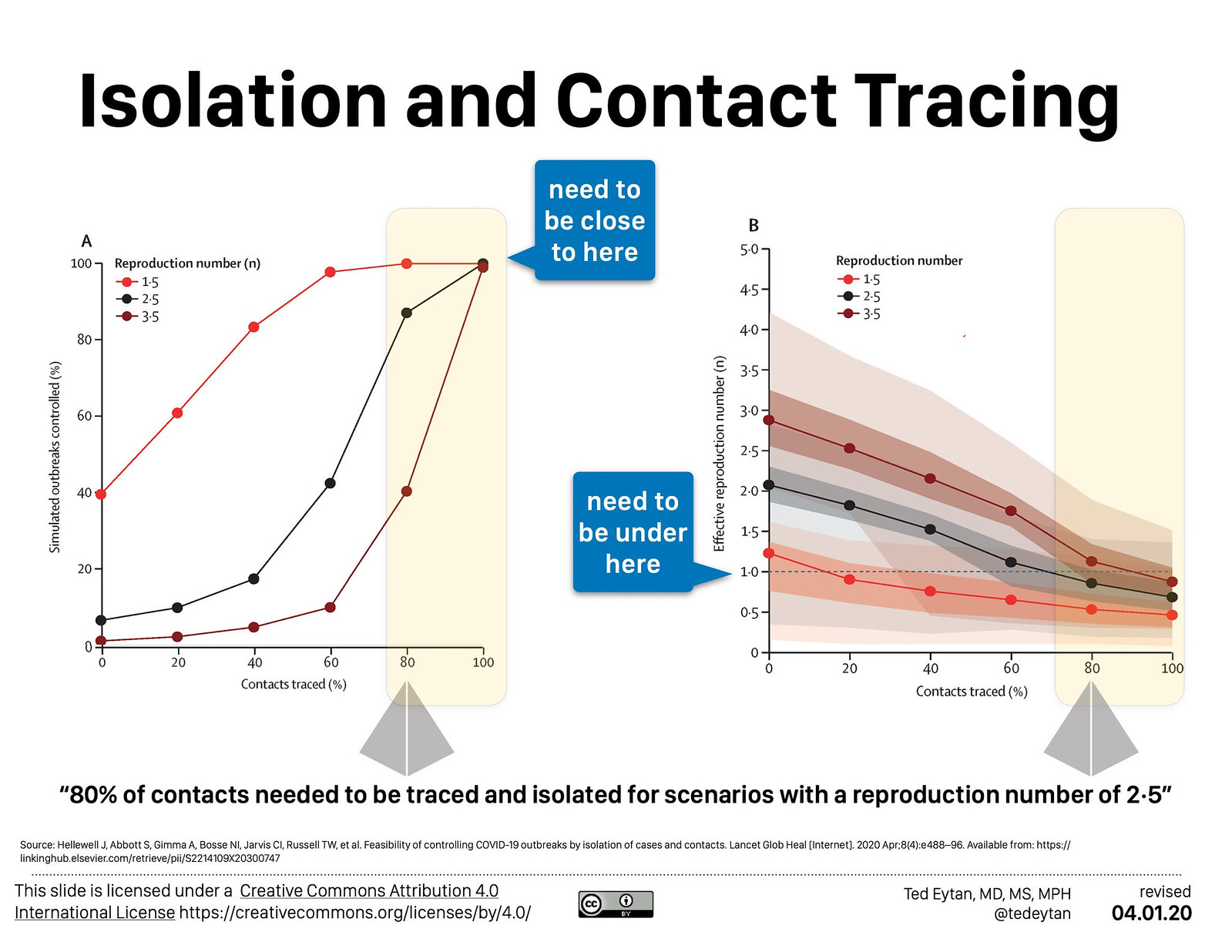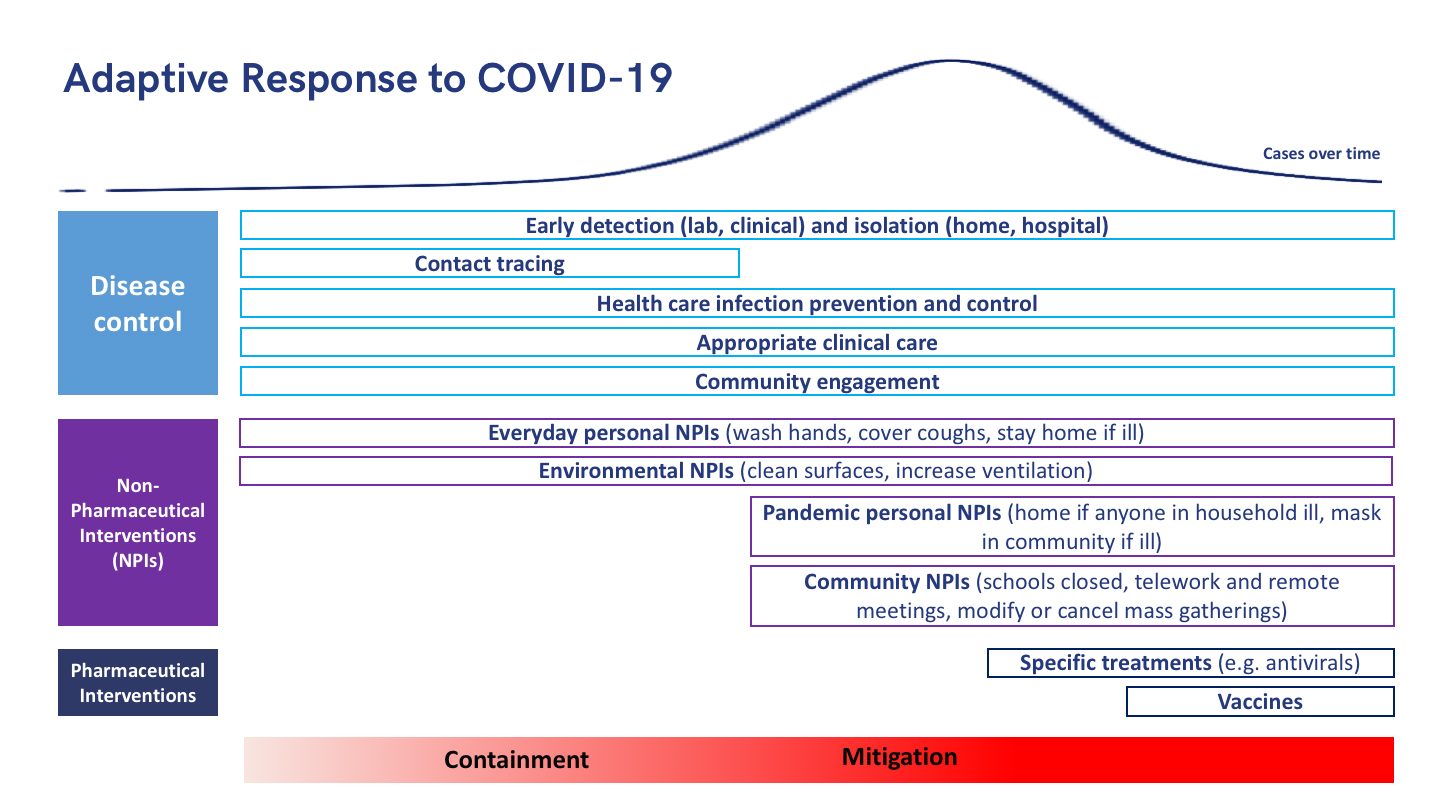
After an incubation period, person A shows symptoms and is isolated at a time drawn from the delay distribution (table). A draw from the negative binomial distribution with mean reproduction number (R0) and distribution parameter determines how many people person A potentially infects. For each of those, a serial interval is drawn. Two of these exposures occur before the time person A is isolated. Each contact is traced with probability ρ, with probability 1–ρ they are missed by contact tracing. Person B is successfully traced, which means that they will be isolated without delay when they develop symptoms. They could, however, still infect others before they are isolated. Person C is missed by contact tracing. This means that they are only detected if and when symptomatic, and are isolated after a delay from symptom onset. Because person C was not traced, they infected two more people (E and F), in addition to person D, than if they had been isolated at symptom onset. A version with subclinical transmission is given in the appendix appendix (p 12).”
Source: Hellewell J, Abbott S, Gimma A, Bosse NI, Jarvis CI, Russell TW, et al. Feasibility of controlling COVID-19 outbreaks by isolation of cases and contacts. Lancet Glob Heal [Internet]. 2020 Apr;8(4):e488–96. Available from: https://linkinghub.elsevier.com/retrieve/pii/S2214109X20300747
Copyright © 2020 The Author(s). Published by Elsevier Ltd. This is an Open Access article under the CC BY-NC-ND 4.0 license Terms and Conditions
2020.03 COVID Ted Eytan MD-1001 885 (View on Flickr.com)
What’s next after test everyone
As I have been interested in antibody testing for coronavirus (see: Just Read: Molecular and serological testing of COVID-19: implication of multiple shedding routes (how does the antibody test work?), this has led me to ask “what next” when tests are available.
This paper describes computer modeling of epidemic control through contact tracing and isolation. I’m attaching the tweetstream from one of the authors, @RozEggo, below which explains the findings.
Can isolation and contact tracing control outbreaks of 2019-nCoV?
Our new model determines under which scenarios it may work and what % of contacts need to be be traced.Info and pre-print here: https://t.co/NX7VWn5paD
NB: Not yet peer-reviewed. (1/5).@HellewellJoel @sbfnk pic.twitter.com/so5HMhmVvN
— Dr Roz Eggo (@rozeggo) February 8, 2020
For successful epidemic control, under the most optimistic conditions, 80 % of symptomatic contacts would have to be traced and isolated to control 80 % of outbreaks. In the real world, every symptomatic contact might not be isolated successfully or in time, or the disease might be transmissible by asymptomatic carriers for a long period of time.

(A) The percentage of outbreaks that are controlled for scenarios with varying reproduction number (R0), at each value of contacts traced. The baseline scenario is R0 of 2·5, 20 initial cases, a short delay to isolation, 15% of transmission before symptom onset, and 0% subclinical infection. A simulated outbreak is defined as controlled if there are no cases between weeks 12 and 16 after the initial cases. Other scenarios are presented in the appendix (p 2). (B) Effective reproduction number in the presence of case isolation and contact tracing. Median, and 50% and 95% intervals are shown.”
Source: Hellewell J, Abbott S, Gimma A, Bosse NI, Jarvis CI, Russell TW, et al. Feasibility of controlling COVID-19 outbreaks by isolation of cases and contacts. Lancet Glob Heal [Internet]. 2020 Apr;8(4):e488–96. Available from: https://linkinghub.elsevier.com/retrieve/pii/S2214109X20300747
Copyright © 2020 The Author(s). Published by Elsevier Ltd. This is an Open Access article under the CC BY-NC-ND 4.0 license Terms and Conditions
2020.03 COVID Ted Eytan MD 2-1002 884 (View on Flickr.com)
There is an app for that
In this era, most of us carry devices that can pinpoint our location and would therefore address people’s limited memories or lack of discretion. One such app is described here: See: Private Kit: Safe Paths; Privacy-by-Design Contact Tracing | safepaths
Part of a larger adaptive response
This graphic from Latest Insights | Prevent Epidemics describes where this fits into an overall response (used for educational, non-commercial purpose):

Reference
Hellewell J, Abbott S, Gimma A, Bosse NI, Jarvis CI, Russell TW, et al. Feasibility of controlling COVID-19 outbreaks by isolation of cases and contacts. Lancet Glob Heal [Internet]. 2020 Apr;8(4):e488–96. Available from: https://linkinghub.elsevier.com/retrieve/pii/S2214109X20300747